To truly see a new place, the traveler must find the highest point. Uncovering the highest point of a destination can be advantageous to the lost explorer looking to find their place on the map. Most importantly, to know a new place, you must find the metaphorical high point, even if the lows surround you.
On the Greek island of Santorini in the Cyclades, it was often difficult for me to find the high points. Bogged down with overpriced resorts, plenty of tourist traps and clogged roads with ATVs steered by those in tank tops and colored the bright red of tomatoes, I was beginning to question an island I long dreamt of visiting. I questioned until I found its high point in Ancient Thira.
Switchback after switchback, our little rented Kia that often felt like it couldn’t, could make it up the hill Mesa Vouna on the southeastern coast of Santorini. The zigzag of the road and the narrow nature of the path led me to believe something remarkable was waiting on the other end. A traveler’s leaping stomach over the too close for comfort cliff below doesn’t go without reward. Upon reaching the pinnacle of the hair-raising journey, I find that even the donkeys on the island want to see Santorini’s high points.
More stairs and an uphill climb steer me to the site of Ancient Thira, a community first settled by the Dorians in the ninth century B.C. Like most ancient cities, its location was no accident. The settlement was strategically laid out up high on a hill in order to control the southeastern Aegean. Being naturally fortified also worked to Ancient Thira’s advantage for surviving and sustaining. Extending over the long narrow ridge of the hill, I attempt to make sense of the rubble including temples, baths, a gymnasium and even a theater. Something tells me this was the best seat in the house back in the day.
The ruins are a jumbled story of Hellenistic, Roman and Byzantine existence in this small space. Most of what I see today hails from the second century A.D. Ancient Thira is a converging of time periods, people and ways of living, no different than the island it resides upon. The wind whips in a manner like the most powerful of hair dryers. It seldom subsides but the tourist in search of less tourism fails to mind a messy mane for up here, this is how the island used to be.
Like all ancient cities left in ruin, its decline is pinpointed to a certain time. Ancient Thira’s end would begin around the third century A.D. However it would still host life after the end of antiquity in the Early Christina period. It would even act as a refuge from Arab invasion later on in its tale. And remarkably enough, its story wasn’t fully told until German Hiller von Gaertringen unearthed Ancient Thira in 1896.
Amidst the open-air sanctuaries, temples and puzzles pieces of ruins, I take in the views as the ancients have before me. This was their escape from invaders, where life could live without interruption. And this is my escape from the fabricated Santorini. It is no wonder the Dorians first settled here, elevated on arguably Santorini’s symbolic high point.
Have you been to Ancient Thira?

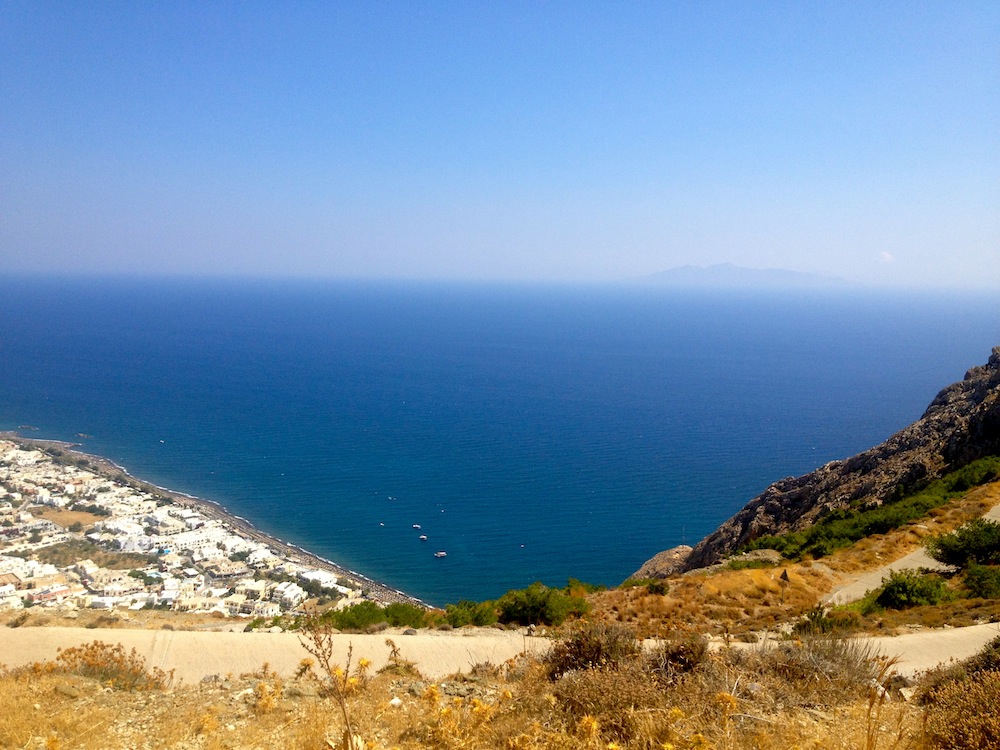
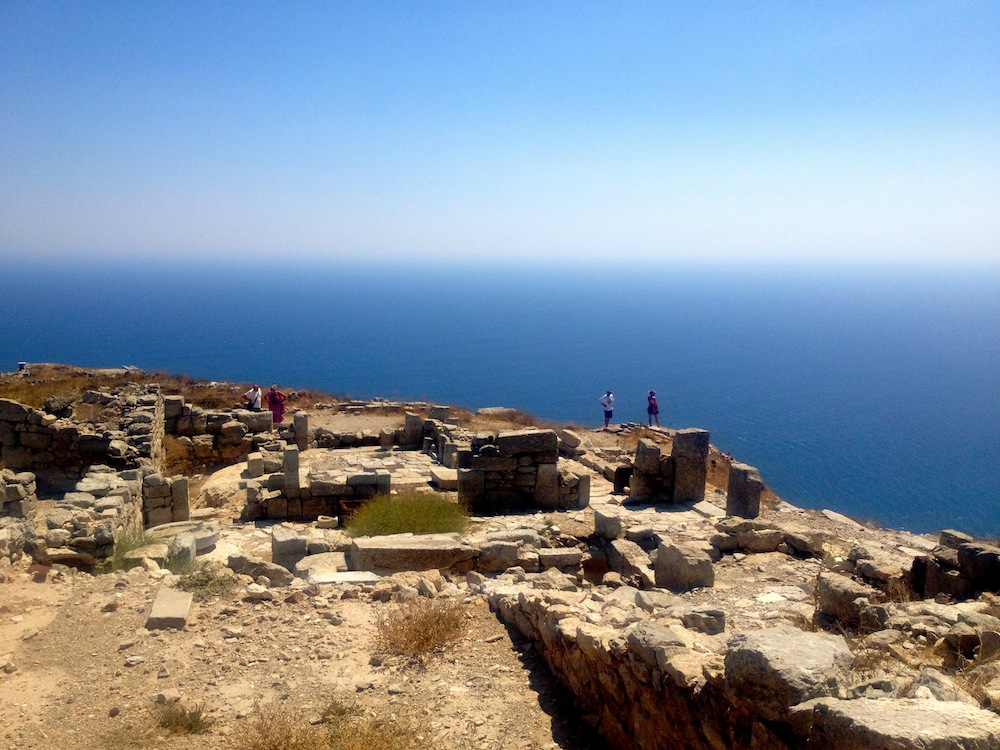
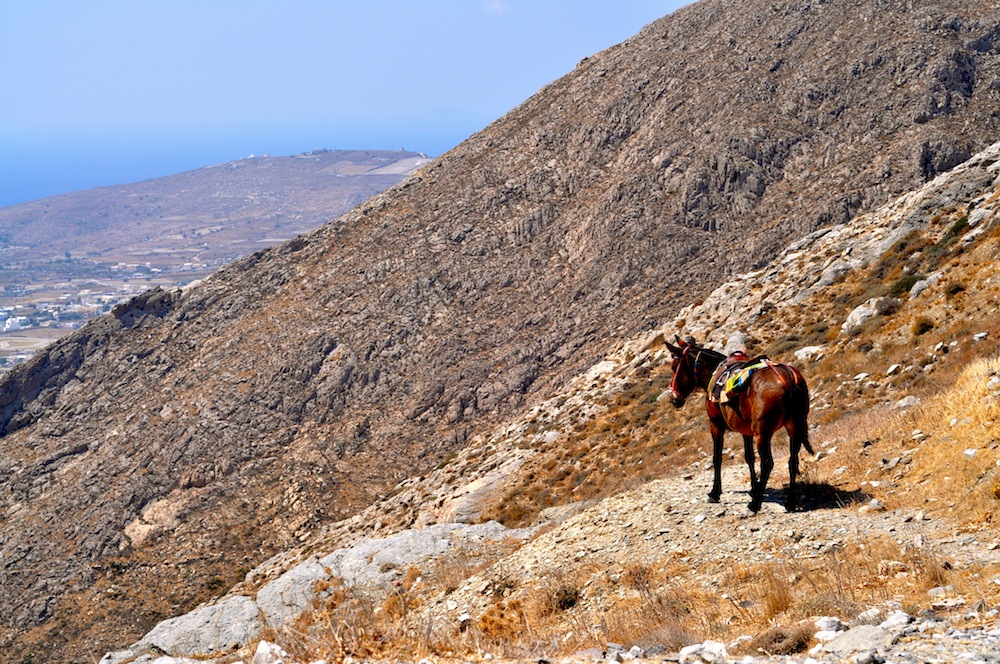
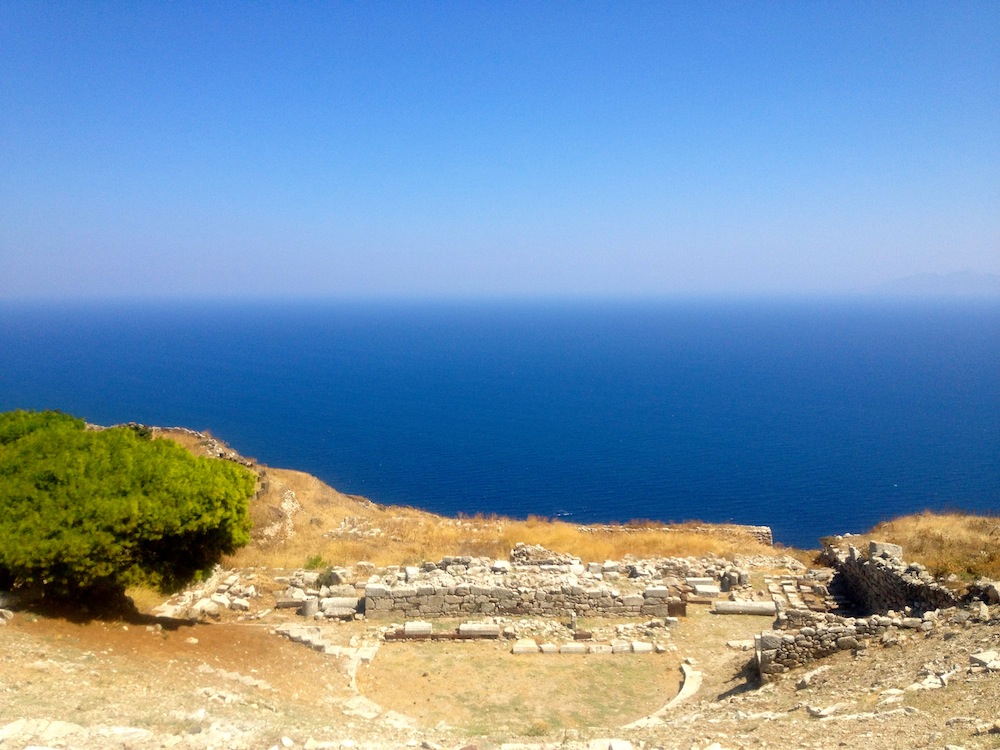
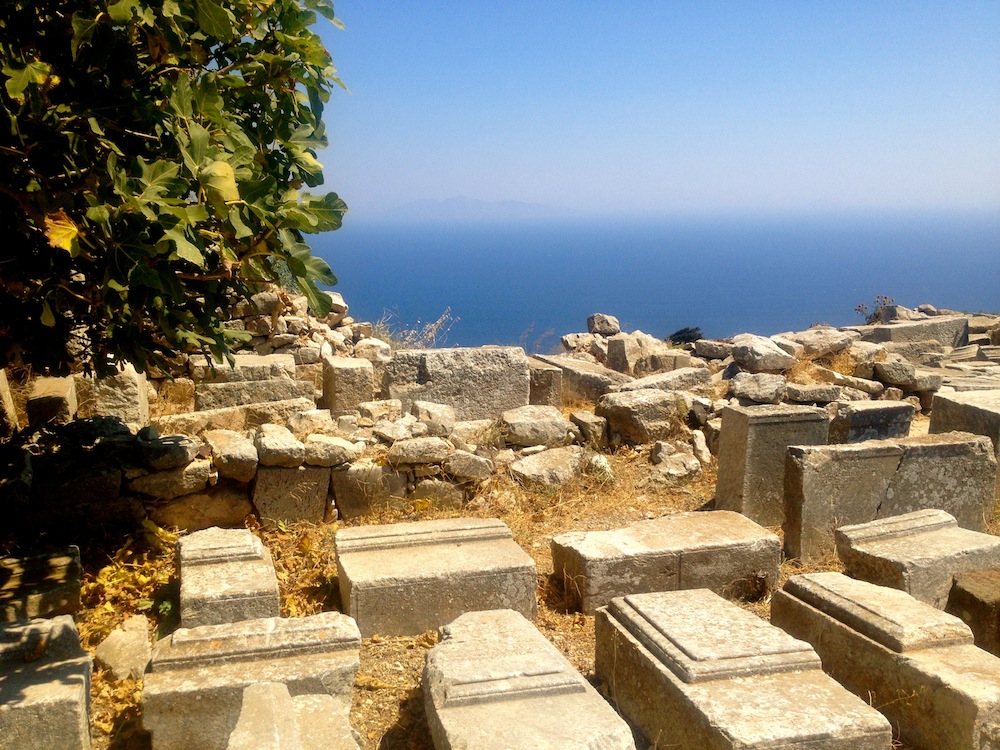


We haven’t been to Ancient Thira (or Greece, yet). I love your photos! It’s so amazing how some places have so much history.
Wow, that sky and that water! I love how the horizon just melts away. I’m glad you were able to find something so captivating in that experience.
Wow… what a gorgeous place!
I love the donkey photo especially! Great photos. I have not been to Thira yet, but perhaps one day in the near future.
These pictures are just unreal. Look at that water! That last photo of you is great. Thanks for sharing. I hope you’re having a fabulous honeymoon!
Happy travels 🙂
I agree. It’s important to find a high point to have the best of views!
Sigh…
Another great “high” adventure on Santorini is to hike along the spine of the island from Oia to Fira (or the other way around) – about 3 to 4 hours of hiking. It’s fabulously scenic, with views of the crater on one side and sea views on the other. Really one of the world’s best hikes. But there’s little shade, so fall and spring are the best times to do this. And if you want to stay in a lovely cave hotel in Oia with drop-dead views, check out Ikies (though it’s one of the pricier places to stay) – our review of Ikies: http://www.sandinmysuitcase.com/ikies-santorini-cave-hotel-a-sunset-dream/
I have been couple of time in Greece but never in Ancient Thira, great pictures, love the last one especially!
I’m glad you were able to find a little escape in the end – and I love the last photo!
I want to see ancient Greek cities so much! I live in envy of people in places where the archaeological sites are just . . . there, above ground, for anyone to see. Like an ordinary part of the landscape.
Amazing, Suzy. This post takes me away in a daydream 🙂